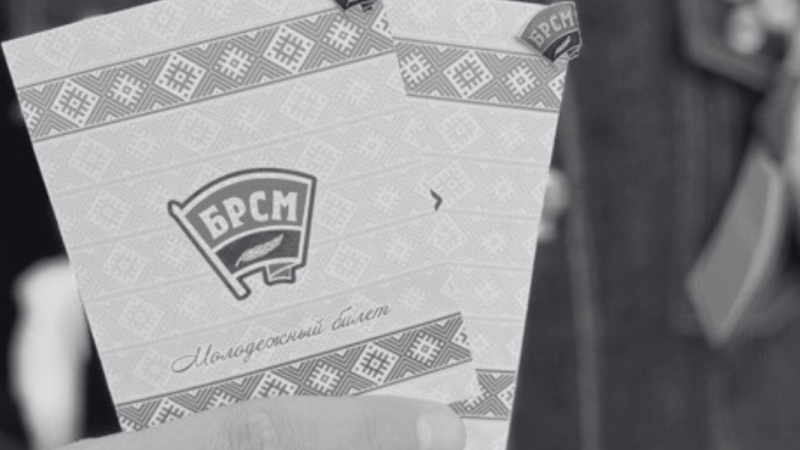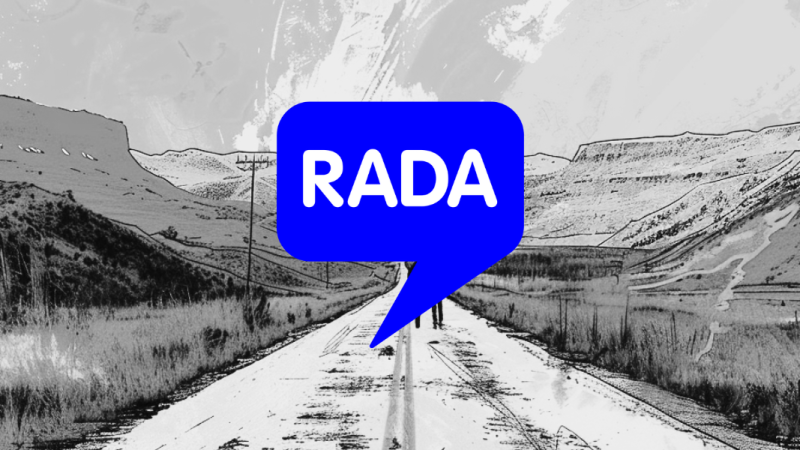Analysis of the situation of Belarusian youth 2019-2022
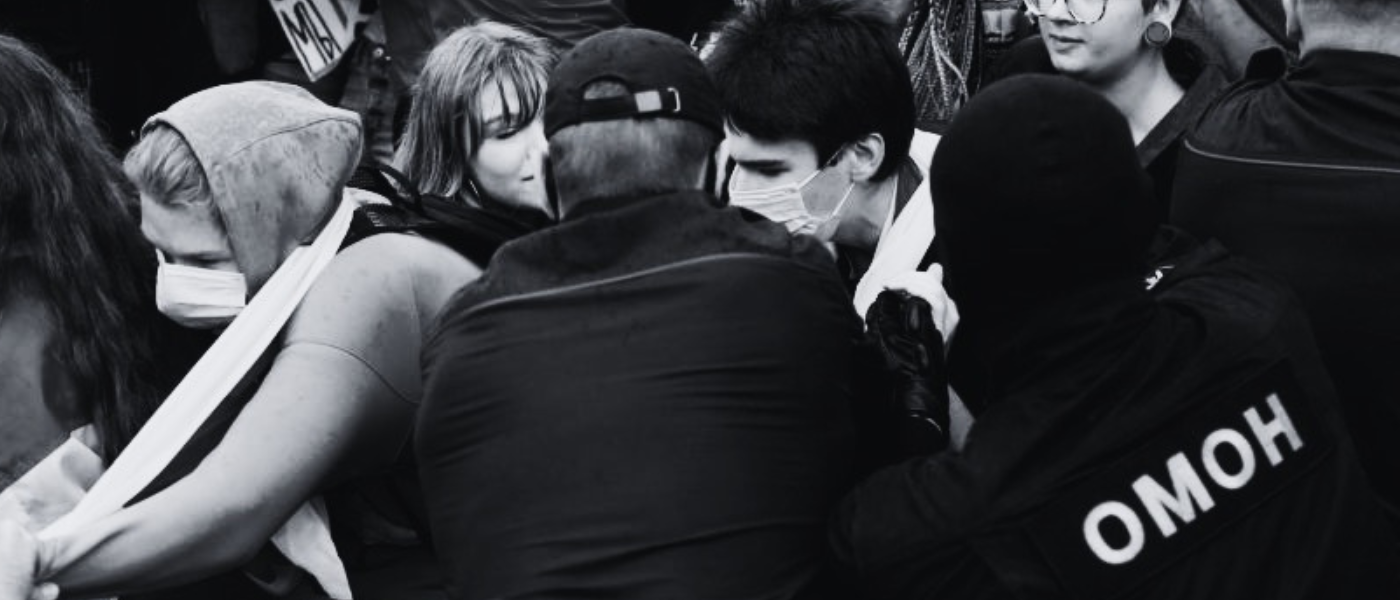
Belarusian society is going through a tough period. Starting from the COVID-19 pandemic, Belarus has entered a cycle of socio-political crisis, bringing more and more new shocks but still far from being resolved. The youth, which is one of the most dynamic and at the same time vulnerable social groups, reacts to this crisis in its own way.
Today, we have fewer and fewer instruments for adequate assessment of these reactions and changes, problems, and needs of different social groups in Belarus. Statistics data centers are being closed, sociological surveys are forbidden, the unfolding of repressive practices in the country caused a sharp reduction of publicity. In this document we will present the results of the research conducted by the methods today accessible. The main goal of our research is to reveal interests, problems and opportunities of the youth in Belarus. On top of this, we have been interested mostly in the youth as a sociological group in a whole, and especially young people who are actively involved in civil or civil-political life. The research consisted of two steps, which differed in terms of the targeted group (general sample) and methodology.
The first step of empirical data collection was conducted in February 2022 as online survey. At this stage, we were trying to reveal the interests and needs of Belarusian youth in general as well as to highlight how did it change in comparison to 2020. It has to be emphasized that the survey took place before the break out of the war in Ukraine into the hot phase and we have no idea, how this change in the situation has impacted the views and ideas of the young people in Belarus in regard to questions interested for us.
The second stage was devoted to activists of the youth organizations. In October 2022 we have conducted three focus groups with young people, more or less involved now in civil activism, we have analyzed possible forms and limits of activism in today’s conditions.
Below we have presented the results of the two stages of the research and we will try to give a common assessment of the current situation of Belarusian youth.
Methodology of the data collection:
The research was conducted in the form of an online survey in pop-up format, shown to the randomly chosen users of the particular websites.
The sample structure was adjusted by the analytical weighting of data by gender, age, and region. The sample refers to the actual number of respondents who answered the survey.
Target group (sampling frame):
Internet users from Belarus between the age of 14-31.
Research stages:
- 1st stage: November 2019 – March 2020. Sample size – 1073 respondents.
- 2nd stage: February 2022. Sample size – 519 respondents.
Sample characteristics and comparability of results on different research stages.
The sample structure was analytically weighted by gender, age, and region of living. Based on these parameters the results are close to the structure of the general population. Data from different research stages is comparable.
Interests and spheres of activity
In 2022, in comparison to 2020, more activity was observed mainly in the spheres of education, sports (which may be connected to a larger proportion of students in the sample), and household (family, children, home).
We notice that activity indicators related to civil activity, politics, science, business, and cultural life haven’t practically changed or have stayed at the exact same levels. Significantly (more than twice) decreased activity in such spheres as traveling which is explainable due to the COVID-19 pandemic and challenges in movement noticed in this period.

The structure of the request for educational/training activities has practically not changed. The only significant change is the drop in demand for personal development. Otherwise, the most general category “Additional knowledge and skills, educational courses” is still in the lead, followed by the development of communication skills and employment. We also note that every fifth respondent, both in 2020 and 2022, could not definitely answer which social services would be important to him.
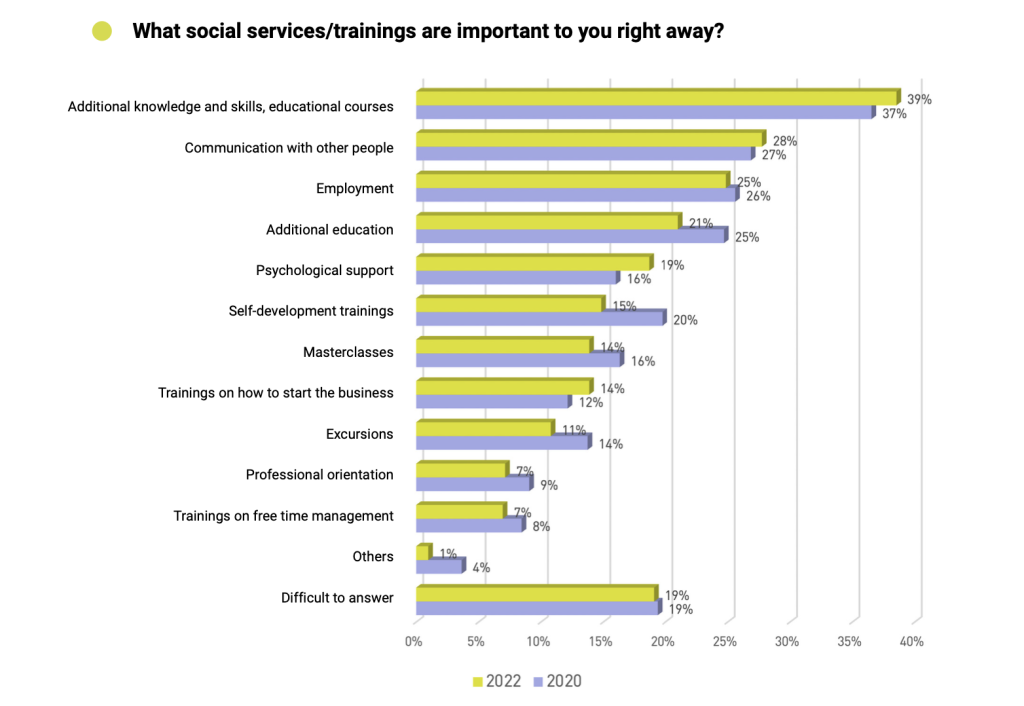
CSOs and the State as the youth social services providers
The level of awareness of civil society organisations, according to the survey data, didn’t increase despite active social and political processes, on the contrary, it decreased. The level of ignorance of what civil society organizations are has remained stable, but the proportion of those who are sure that they know, what it is, has more than halved.

We would like to note that in 2022, an open-ended question was asked in which respondents were asked to name two or three CSOs that first came to mind. A third of the respondents could not answer this question; the most common answers were «trade unions» (10.6%), Belarusian Republican Youth Union (8.7%), «sports organizations» (6.9%), «church, religious organizations» (3.3%). Of the “proper names”, the “Red Cross” was also quite often called (2.3%), while mentions of other organizations’ names were of a single nature. In addition, the media, political parties, family, universities, theatres, etc. (collective categories) were named as civil society organizations.
Opportunities proposed by the NGOs in the area of societal problems or their social group (youth) problems solving as well as in the area of search for the like-minded people are potentially interesting (13-14%) for the respondents (and this number is very close in 2020 and 2022 ).
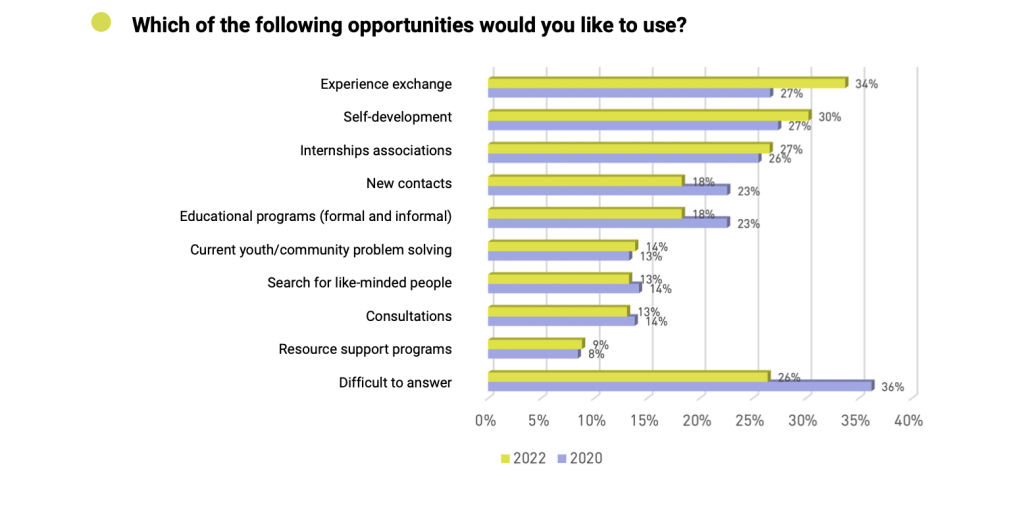
Expectations for assistance from state organizations and institutions are almost as low as the the level of real support. More than two-thirds of those surveyed in 2022 (as in 2020) either directly say that no one helps them, or they cannot give a definite answer to this question (which is essentially the same). More than half find it difficult to answer the question which state institutions should help young people and them personally, or they think that none should. The highest expectations (at the level of 4-7%) are associated with educational or student organizations or the highest levels of government (president, government, state as a whole). The level of real help and expectations from trade unions, social services, employment centers is on the verge of statistical error.
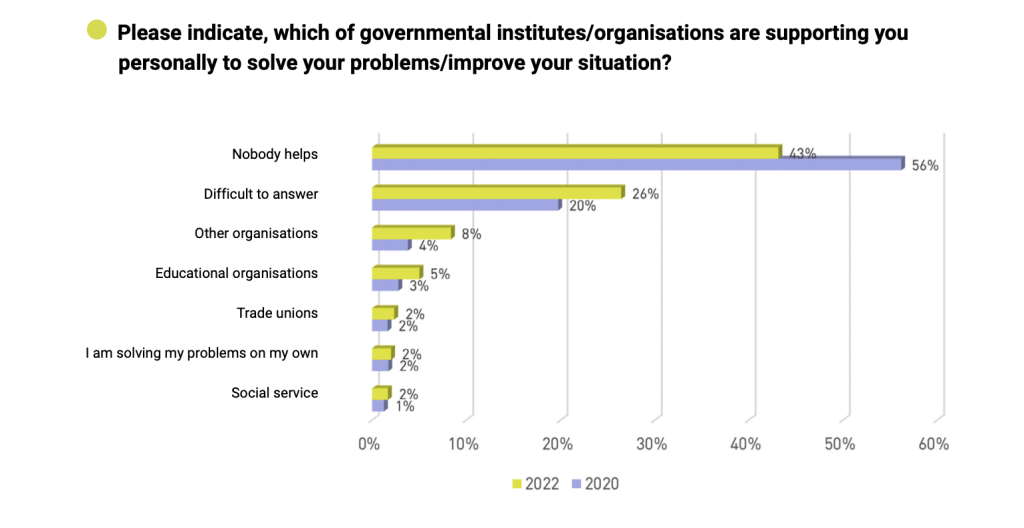
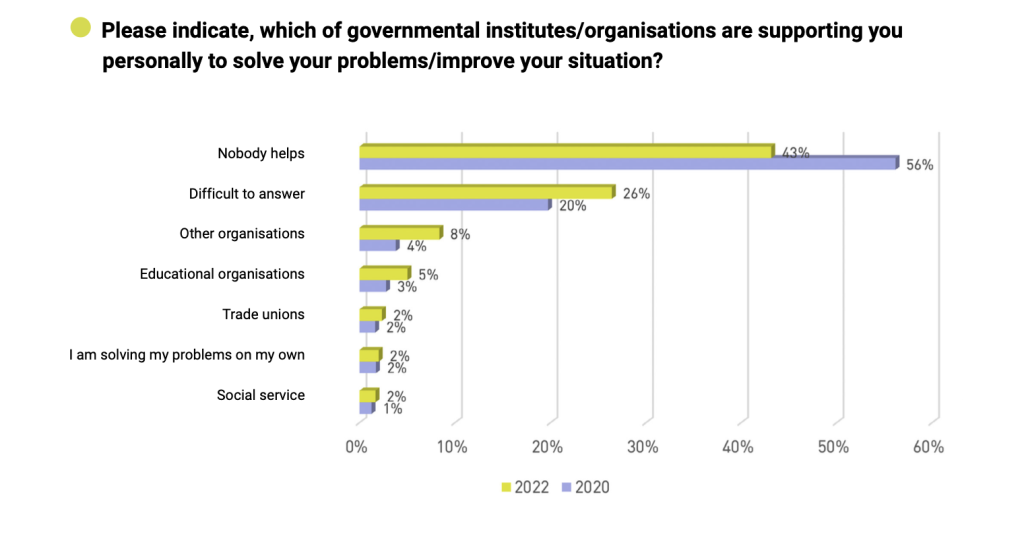
Conditions for the fulfilment of potential and participation in decision-making
The most popular answer to the question “What do you lack to participate in public life?” remains ‘time’ (44% respondents of 2020 and 48% of 2022). The importance of economic problems as an obstacle to involve in public life increased (from 21% to 28%), while the ignorance factor, on the contrary, became slightly less significant. 12-13%of the respondents self-critically note that their participation in public life is hindered by their own inertia and infantilism.
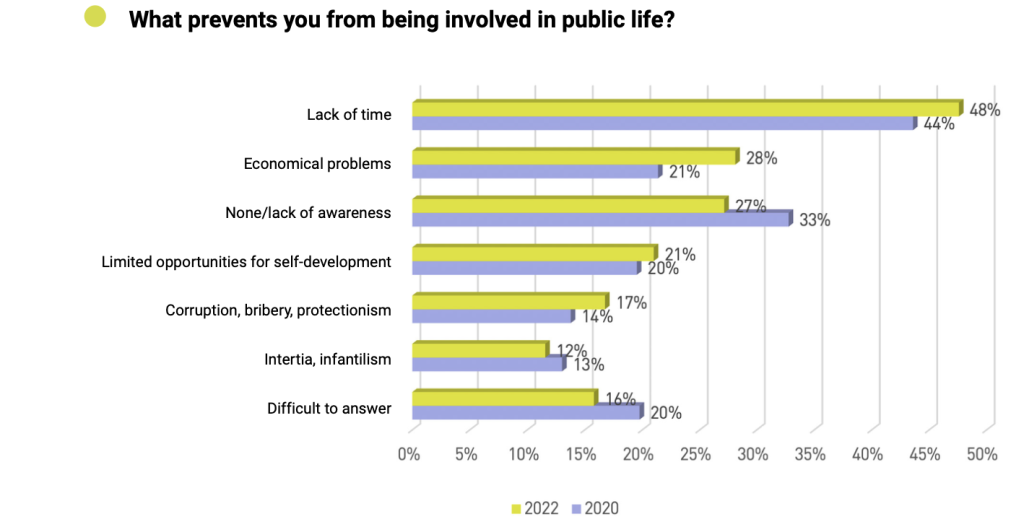
More than a quarter of the respondents do not know what ways of youth participation in solving social problems and strengthening their voices could be effective. The most popular answer was “education”, although its number has decreased by 5% compared to 2020. Not very much, but significantly increased the share of those who consider blogging and voting in elections an effective way to strengthen their voice. In 2022 they took second and third places in the efficiency rating. Media and business gain steadily 19-22%. It should be noted that the popularity of non-formal education as a way of participating in problem-solving has decreased by half (from 24% in 2020 to 12% in 2022). Participation in political parties and advisory councils, according to young people, is still the least effective way. These methods gain 11-13%.
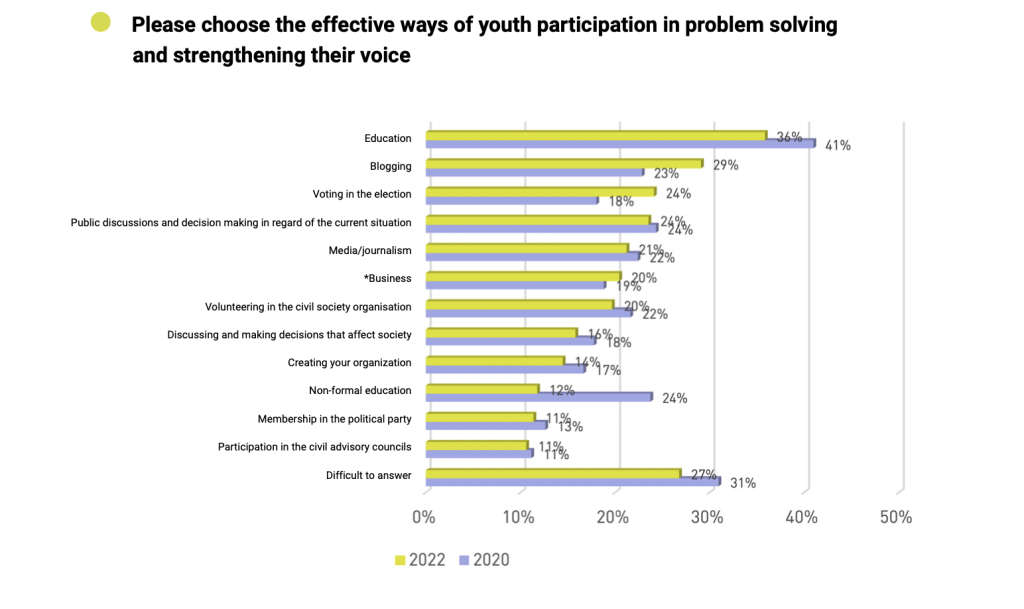
The desire to take advantage of various opportunities in the future has increased in almost all areas compared to 2020. 50% of respondents in 2022 would like to use the opportunities that business provides (32% in 2020), 37% – blogging (25% in 2020), 35% – to create their own organization (22% in 2020). Not so significantly, but still, the potential interest in journalism, non-formal education, and public discussions or decision- making at various levels has grown.

Migration attitudes of young people at the beginning of 2022
12,3% of the respondents have left or are seriously planning to leave Belarus in the near future, and another 28,3% would like to do this, but do not have such an opportunity. Thus, about 40% of Belarusian youth with varying degrees of determination and certainty would not want to stay in Belarus today.
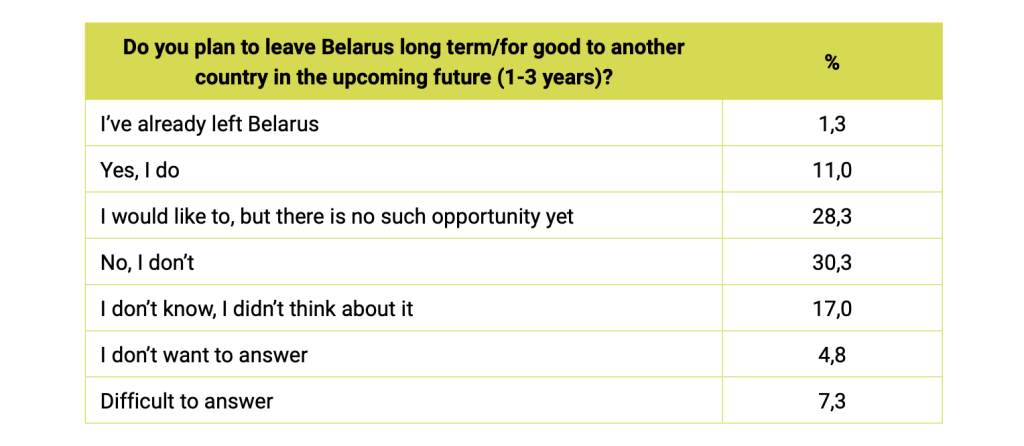
Half of those who left or are planning to leave Belarus want to leave specifically for a permanent place of residence, about 40% – for the purpose of temporary employment, and only 17,2% for education.
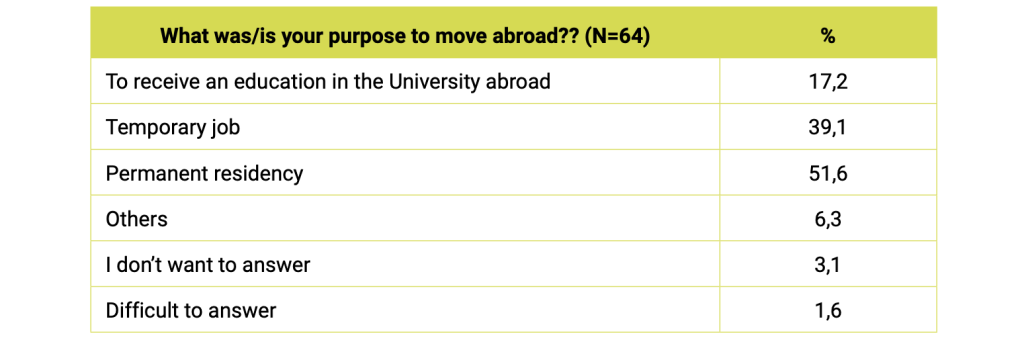

Situation assessment, problems and needs of youth activists in Belarus
In October-November 2022, we conducted three focus group discussions (one online with the representatives of different cities and two offline – in Minsk and Brest) with activists who continue this or another way continue to work in the civil society associations or initiatives in Belarus. The total number of focus groups’ participants amounted to 14 people between the age of 18-35, out of whom there were 3 men and 11 women; 5 participants were from Minsk, and 9 were from other Belarusian cities.
In the course of the study, we tried to understand the situation in which public activists live and work today in Belarus, what main problems they face, what prospects for the development of the situation they see, and in which directions and forms they consider it possible to work themselves. When planning the study, we did not exclude that the respondents may feel distrust, and would not want to open up to strangers, especially on sensitive issues. These fears were not justified, and mutual trust was established fairly quickly during the discussions. However, we ran into another problem – a significant part of the time allotted for discussion was spent on mutual psychotherapy, pronouncing traumas and anxieties, feelings, and moods. Since similar processes unfolded in all three groups, they can be considered typical and taken into account as one of the independent characteristics of the situation.
Considering the character of the discussions, the situation, and the number of participants, we designed the research report in a form of a first-person essay, bringing together the opinions, assessments, and statements of different participants of the focus groups.
Somehow it happened this way that to live here you now need special reasons. There are anchors holding people, they seem pretty objective: senior parents who you just can’t leave, a property that is scary to lose, unfinished education, etc. But there are also those who would like to leave but can’t decide for this fearing that they won’t be able to manage in unfamiliar situations, they don’t know the language, won’t be able to find a job…
Read more here
General conclusions and recommendations
After a period of socio-political mobilization in 2020, Belarusian society was driven into a very rigid framework, probably the toughest in the post-Soviet history of the country. The 2019–2020 period was a time of increased political activity among Belarusian youth, however, repressions and a general deterioration in political and legal conditions in the 2020–2021 period significantly weakened all the achievements of previous time period.
For the Belarusian youth, in general, all the problems that existed in the pre-crisis period remained and deepened: receiving a quality education, employment, and elevation of the living standard. The problems associated with external mobility, leisure infrastructure, and the security of life in the country have become more significant.
In general, the Belarusian youth is adapting to the situation, but it should be noted that there is a rather high level of migration sentiment. Only a third of those surveyed at the beginning of 2022 (before the start of the hot phase of the war in Ukraine) had definitely no plans or desire to leave the country. It can be assumed that after February 24th, 2022, the proportion of those who would like to leave Belarus has increased. It is clear that the desire to leave the country does not always lead to real emigration, but these figures look quite alarming and at least characterize the level of psychological discomfort in the country.
Today, the policy of the Belarusian regime is focused on the destruction of any form of non- conformity and independent activity of people, in whatever area this activity is carried out. This inevitably affects the Belarusian youth, their involvement, and their interest in political and social activities.
Youth civil society organizations, which were not so well known among the broad circles of Belarusian youth before, against the backdrop of the mass liquidation of CSOs, the migration of a significant amount of the activists, and repressions against those who remained, have lost a significant part of the opportunities that they had before.
It is becoming increasingly difficult to show initiative not only in political and social activities, but also in business, entrepreneurship, self-education, cultural development, and recreation. At the same time, requests for renewal of activity or development in various areas, ranging from business and non-formal education to participation in decision-making, are growing.
It is difficult to say how realistic and how declarative these desires are. Perhaps this is the psychological effect of the closeness and problematic life of the last two years, when, first due to the coronavirus, and then the unfolding political crisis, various opportunities closed or disappeared, and life became less and less eventful and intense. On this background, one wants to dream about the return to a normal life, various opportunities, etc.
Today, civil society organizations and initiatives have rather limited opportunities to respond to these requests, since any activity that is not directly controlled by the state is actually outlawed. Members of CSOs and simply active people who initiate various projects and programs are constantly under the threat of persecution for any action, even such harmless ones as organizing a film club, an educational course, or a blog on Instagram. Continuation of work in these conditions requires special rules of organization and self-organization.
Refusal of publicity. It is quite difficult, but in most cases it is necessary to restructure the organization of activities, almost completely abandoning the use of familiar tools both in working with target groups and in presenting and disseminating results (mass media, social networks, any wide mailings, etc.). In the organization of activities, events, and programs, one has to use the methods of individual selection and snowball, in this situation, the importance of personal contacts and acquaintances, and the breadth of social ties increase dramatically. One of the difficulties that organizations and initiatives themselves are not able to cope with is how to expand the circle of involvement or establish links between different circles. Here the help of umbrella structures, which could serve as a link between various individual groups or disseminate information in the presence of mutual trust and proper attention to security issues, is needed.
There is one more problem. Due to the refusal of publicity, it has become difficult to analyze the actions of the organizations, there is no assessment of their success, as well as discussion and adjustment of ways and methods of work or results fixing. All of these functions were previously performed through public presentations of activities and feedback from both target groups and colleagues and partners. It is necessary to look for formats in which these functions can be performed in the new conditions. This will not only contribute to the exchange of experience and increase the efficiency of activities but will also maintain a sense of the significance of the work of Belarusian activists.
Creation of duplicate structures. For initiatives and organizations that claim to be sustainable, all key positions should have a doubling in order to remain functional if specific people fall out of the activity.
Flexibility and adaptability of activity planning. Despite the rather limited planning horizons typical for activists working in Belarus today, the process of adaptation to the situation of uncertainty has passed. The work plans and projects can be built in the perspective ranging from a month to a year. At the same time, one must be prepared (both psychologically and organizationally) that plans may require restructuring at any time.
Special events for Belarusian activists outside of Belarus. Trainings, educational or organizational meetings held in other countries by relocated activists and CSOs are in demand. However, when conducting them, one should be attentive to at least two features:
- from the point of view of publicity and security, events should be organized with the same precautions as inside the country;
- the ever-increasing gap between the worlds of those who continue to work in Belarus today and those who work outside it must be taken into account in the organization of communication.
Psychological help and support are becoming not one-time actions, but an area of constant concern. In addition to various forms of such support (courses, psychological assistance, consultations), it would be useful to introduce periodic diagnostics (self-diagnosis) into practice. Alongside professional assistance, formats aimed at organizing communication are in demand. Such events can be based on any topic or activity that does not require high intellectual or action potential but allow organizing a joint pastime, strengthening trust and human relationships, sharing one’s anxieties and hopes, and providing psychological relief.
Read Analysis of the situation of Belarusian youth 2019-2022

